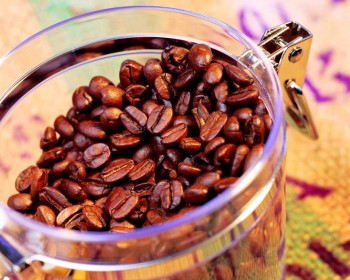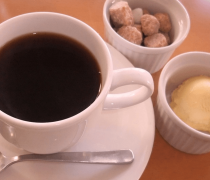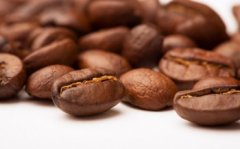Costa Rican black honey correctly drink French black honey coffee bean price

Professional barista communication, please pay attention to coffee workshop (Weixin Official Accounts cafe_style )
We usually see honey processing methods are: yellow honey, red honey, black honey
Yellow honey: about 40% of pectin is removed; drying method needs the most direct heat absorption, accept the most light drying, lasting about 8 days to reach the stable value of moisture content.
Red honey: about 25% of pectin is removed; compared to yellow honey, drying time is longer, and reduce direct sunlight exposure time, even use shade, lasting about 12 days.
Black honey: almost no pectin removal; drying takes the longest time, at least 2 weeks, use a cover to avoid too strong sunlight, prevent drying too fast, so that sugar conversion is more complete.
Hand-washed black honey. 15g powder, medium grinding (small Fuji ghost tooth knife 4 grinding), v60 filter cup, 88-89 degrees water temperature, the first injection of 30g water volume, 27 seconds of stewing, injection to 105g water volume cut off water, wait for the powder bed water volume to drop to half, then inject water slowly until 225g water volume, tail section do not, water powder ratio 1:15, extraction time 2:00
Although Costa Rica has obtained the recognition of coffee gluttons through honey treatment of coffee beans, it is also inseparable from Costa Rica's superior geographical and climatic conditions and the choice of Arabica coffee varieties. Costa Rica's premium coffee beans are called "very hard beans"(SHB), and there are hard beans (HB) and slightly hard beans (SH) in descending order of quality, which is also how it is graded. Hard beans grow at altitudes above 1500 meters, and altitude always represents the quality of coffee, and high altitude means better quality. In addition, due to the high altitude drop caused by sufficient rainfall, the growth of coffee trees is very beneficial; and the high altitude night temperature is low, resulting in slow growth of trees, so that coffee fruit better absorb more nutrients, coffee flavor is also richer.
Flavor: Plum, honey, brown sugar, orange blossom, white chocolate
Palate: Good sweetness, soft acidity, round and full, lasting finish
This batch of Farah honey estate black honey treatment, produced from Costa Rica's famous Tarasu, although the development of fine coffee started late, but now Costa Rica's fine coffee development is rapid, with honey treatment of mild acid, soft taste and sweet high-quality berry flavor, has not been underestimated, black honey is retained to reach about 80% of pectin meat, their most obvious difference is from yellow, red, black one is sweeter than one. Coupled with the rich fruit rhyme, won you coffee gluttonous like.
Factory Name: Coffee Workshop Address: No. 10 Baoanqian Street, Yuexiu District, Guangzhou City Shelf Life: 90 Net Content: 227g Packing Method: Bulk Coffee Bean Ripe Degree: Coffee Ripe Bean Sugar Free Origin: Costa Rica Roasting Degree: Moderate Roasting
Country: Costa Rica Fiscal year: 2003
Grade: SHB
Production area: Tara Pearl
Degree of roasting: medium roasting
Treatment: Black honey treatment
Breed: Kaduai
Manor: Faramir Manor
Flavor: Preserved plum, honey, brown sugar
Kaduai is an artificial hybrid of Kadura and Mondu Novo. Kaduai has a relatively good ability to resist natural disasters, especially wind and rain.
Kaduai trees are relatively low, and compared to other coffee trees, kaduai fruits grow stronger and are difficult to pick. The fruit is red and yellow. So far, yellow fruits have not been found to taste better than red fruits. On the contrary, some people found in the cup test that although the acidity of some yellow fruit processed coffee is good, the coffee taste is worse than that of red fruit.
Kaduai was cultivated in Brazil and is now commonly cultivated in Central America.
The most famous large plantation area in the country is Tarrazu, near the capital San Jose. Tara bead production area has the highest average latitude, excellent climate and soil conditions, making Tara bead the most famous and generally recognized as the best coffee production area in Costa Rica. Tres Rios is a famous small production area in Tara bead production area. The most famous Costa Rican single-estate coffee in the world of fine coffee is La Minita Estate, which produces only 160,000 pounds a year.
Its three most famous producing areas are Tarasu, located south of San Jose, Costa Rica, and the Central Valley and Western Valley. Among them, there are many excellent independent estates, all of which are carefully cultivating more finely washed and honey-treated coffee beans. Let us look forward to Costa Rica bringing us more honey-treated coffee surprises.
Important Notice :
前街咖啡 FrontStreet Coffee has moved to new addredd:
FrontStreet Coffee Address: 315,Donghua East Road,GuangZhou
Tel:020 38364473
- Prev

Costa Rican black honey taste fragrant black honey coffee type and price
For the exchange of professional baristas, please follow the black honey made by hand in the coffee workshop (Wechat official account cafe_style). 15g powder, medium grinding (small Fuji ghost tooth cutter 4 grinding), v60 filter cup, 88-89 degrees water temperature, 30g water injection for the first time, steaming for 27 seconds, water injection to 105g water cut off, wait for the water volume of powder bed to be reduced to half and then water injection, slow water injection until 225g water, do not use water at the end.
- Next

Costa Rican black honey flavor describes which brand of black honey coffee is good.
For the exchange of professional baristas, please follow the coffee workshop (official Wechat account cafe_style). The most famous large planting area in the country is Tarrazu, near the capital, San Jose. Tarazhu producing area has the highest average latitude and excellent climate and soil conditions, which makes Tarazhu the most famous and generally recognized coffee producing area in Costa Rica. Tres Rios is the tower.
Related
- Detailed explanation of Jadeite planting Land in Panamanian Jadeite Manor introduction to the grading system of Jadeite competitive bidding, Red bid, Green bid and Rose Summer
- Story of Coffee planting in Brenka region of Costa Rica Stonehenge Manor anaerobic heavy honey treatment of flavor mouth
- What's on the barrel of Blue Mountain Coffee beans?
- Can American coffee also pull flowers? How to use hot American style to pull out a good-looking pattern?
- Can you make a cold extract with coffee beans? What is the right proportion for cold-extracted coffee formula?
- Indonesian PWN Gold Mandrine Coffee Origin Features Flavor How to Chong? Mandolin coffee is American.
- A brief introduction to the flavor characteristics of Brazilian yellow bourbon coffee beans
- What is the effect of different water quality on the flavor of cold-extracted coffee? What kind of water is best for brewing coffee?
- Why do you think of Rose Summer whenever you mention Panamanian coffee?
- Introduction to the characteristics of authentic blue mountain coffee bean producing areas? What is the CIB Coffee Authority in Jamaica?

